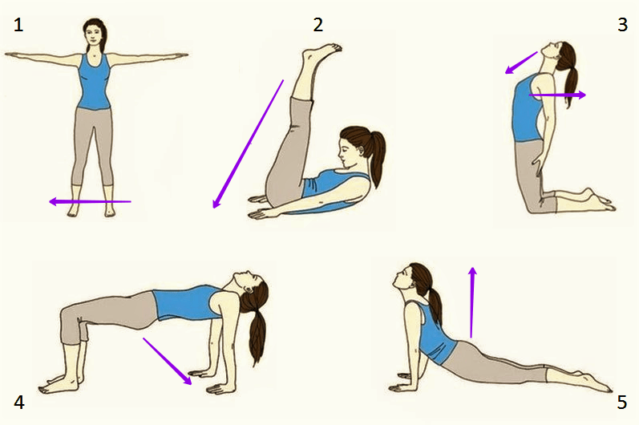Everything You Need to Know About the 5 Tibetan Rites
The Five Tibetan Rites are an ancient yoga practice that consists of a sequence of five exercises performed 21 times a day.
Practitioners report that the program has many physical, mental, and spiritual benefits. These effects are thought to restore a person’s vitality and strength. Due to these benefits, the Five Tibetan Rites are traditionally known as the “Fountain of Youth.”
Let’s explore what the five rites are, how to perform them, and the benefits of this practice.
What are the 5 Tibetan Rites?
The Five Tibetan Rites are thought to be more than 2,500 years old. They were reportedly created by Tibetan lamas (monks), or leaders of Tibetan Buddhism.
In 1985, the rites were first introduced to Western culture in the book “Ancient Secret of the Fountain of Youth” by Peter Kelder. This book, which describes the program as “youthing,” explains the exercises in detail.
The practice of these exercises is based on the body’s energy. According to practitioners, the body has seven energy fields or vortexes. These fields are called chakras in Hindu.
It’s said that these fields control parts of the endocrine system, a network of glands and organs that regulate many of the body’s functions, including the aging process.
Practitioners say youth and vigor can be achieved when these energy fields spin at the same rate. People practice the Five Tibetan Rites in order to achieve this.
What are the benefits?
There’s limited research on the benefits of this practice. In general, they’re based on anecdotal reports by practitioners of the Five Tibetan Rites and the opinions of medical professionals and yoga instructors.
Reported benefits include:
- relief from joint pain and stiffness
- improved strength and coordination
- better circulation
- reduced anxiety
- better sleep
- improved energy
- a youthful appearance
How to do the 5 Tibetan Rites
While each rite is meant to be practiced 21 times a day, you can begin by doing them less frequently.
During the first week, practice each rite 3 times a day. Add 2 repetitions per rite the following week. Continue adding 2 reps per rite each week until you’re doing 21 rounds of each rite every day.
Rite 1
The purpose of the first rite is to speed up the chakras. It’s common for beginners to feel dizzy during this exercise.
- Stand up straight. Stretch your arms outward until they’re parallel with the floor. Face your palms down.
- While staying in the same spot, slowly spin your body in a clockwise direction. Without bending your head forward, keep your eyes open and cast toward the ground.
- Do 1 to 21 repetitions.
Spin as many times as you can, but stop when you feel slightly dizzy. You’ll be able to spin more over time. It’s best to avoid excessive spinning, which is said to overstimulate the chakras.
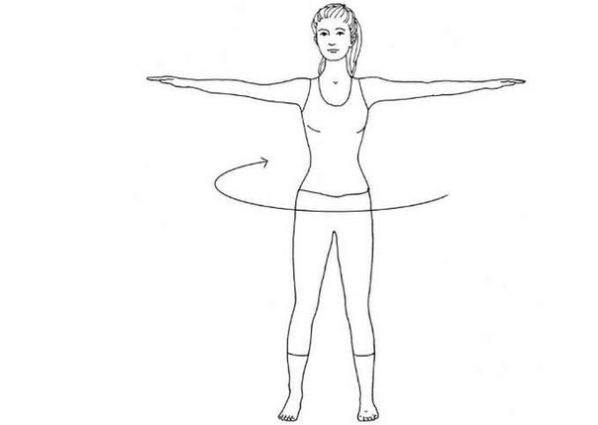
Rite 2
During the second rite, it’s important to practice deep rhythmic breathing. You should continue the same breathing pattern in between each repetition.
To do this rite, you’ll need a carpeted floor or yoga mat.
- Lie flat on your back. Place your arms at your sides, palms on the floor.
- Inhale and lift your head, moving your chin toward your chest. Simultaneously raise your legs straight up, keeping your knees straight.
- Exhale and slowly lower your head and legs to the starting position. Relax all your muscles.
- Complete 1 to 21 repetitions.
If you have difficulty straightening your knees, bend them as needed. Try to straighten them each time you perform the rite.
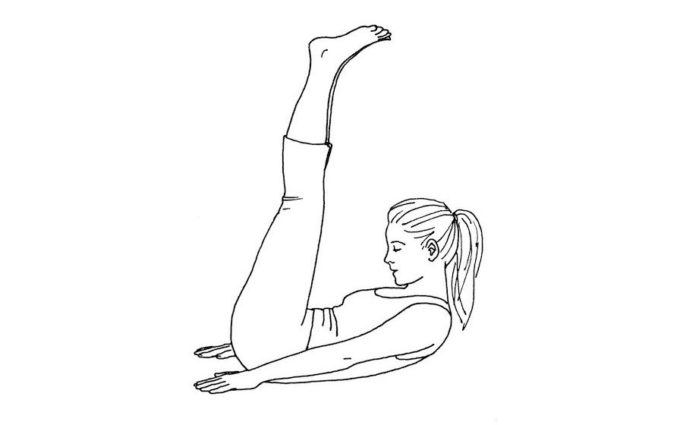
Rite 3
Like the second rite, the third rite requires deep rhythmic breathing. You can also practice this rite while closing your eyes, which helps you focus inward.
- Kneel on the floor, knees shoulder-width apart and hips aligned over your knees. Straighten your trunk and place your palms on the back of your thighs, below your buttocks.
- Inhale and drop your head back, arching your spine to open your chest.
- Exhale and drop your head forward, moving your chin toward your chest. Keep your hands on your thighs during the entire rite.
- Do 1 to 21 repetitions.
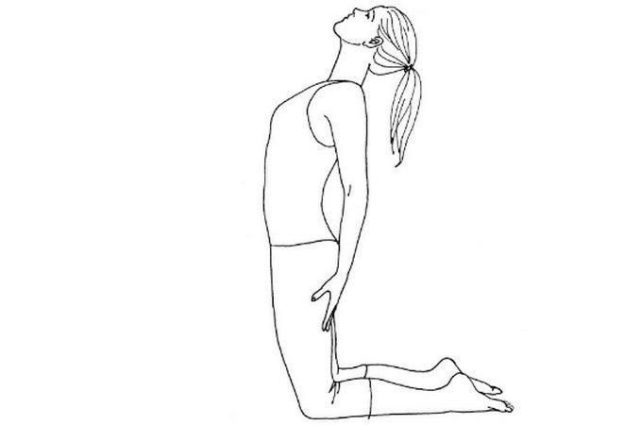
Rite 4
The fourth rite, sometimes called Moving Tabletop, is also done with rhythmic breathing. Your hands and heels should stay in place during the entire exercise.
- Sit on the floor and extend your legs straight ahead, feet shoulder-width apart. Put your palms on the floor at your sides, fingers facing forward. Straighten your trunk.
- Drop your chin toward your chest. Inhale and gently drop your head back. Simultaneously lift your hips and bend your knees until you’re in a tabletop position, with your head gently tilted back. Contract your muscles and hold your breath.
- Exhale, relax your muscles and return to starting position.
- Complete 1 to 21 repetitions.
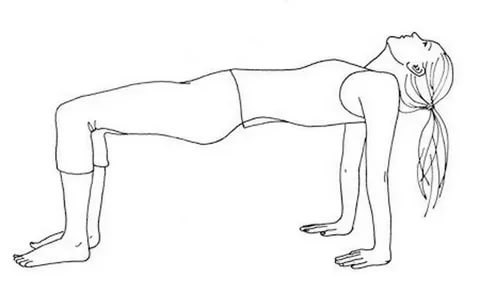
Rite 5
The fifth rite involves both the Downward-Facing Dog and Upward-Facing Dog poses. For this reason, it’s often called Two Dogs. This move also requires a steady breathing rhythm.
- Sit on the floor with your legs crossed. Plant your palms in front of you.
- Extend your feet behind you, toes curled and shoulder-width apart. Straighten your arms and arch your spine while keeping the tops of your legs on the ground. Drop your head back into Upward-Facing Dog.
- Then, inhale and lift your hips, moving your body into an upside down “V” shape. Move your chin toward your chest and straighten your back into Downward-Facing Dog.
- Exhale and move back into Upward-Facing Dog.
- Do 1 to 21 repetitions.
To support your lower back, you can bend your knees when moving in between poses.
The bottom line
The Five Tibetan Rites, or the “Fountain of Youth,” are a series of five yoga poses. It’s a traditional practice that’s been done for more than 2,500 years. People perform these rites with the intention of restoring youth and increasing vitality.
For best results, it’s recommended to regularly perform these poses. You can do them alone or with another exercise program.
Here is a link for the video: 5 Tibetan Rites
